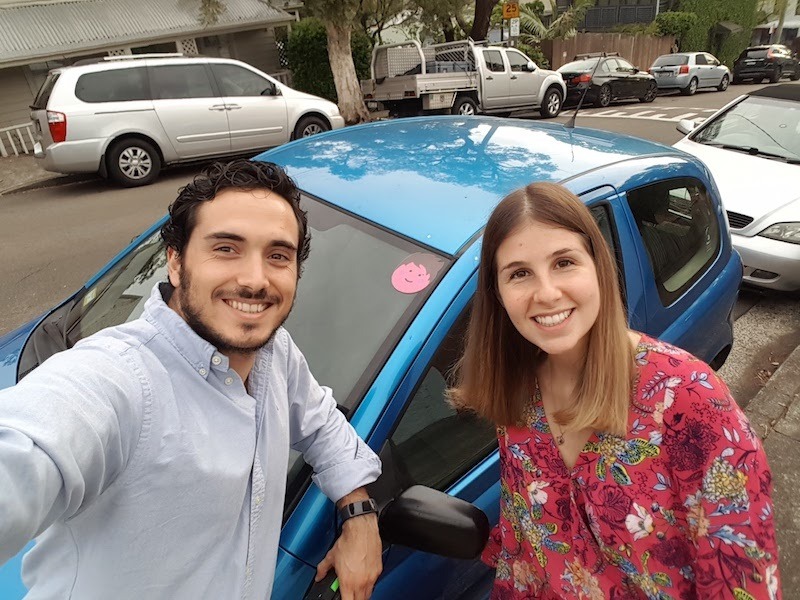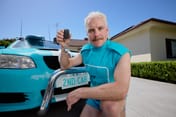
Moving to Sydney: how to find a house and make it feel like home
Santiago moved to Sydney to start a new life. Here are his tips for finding a house, making it home, exploring your new neighbourhood, meeting people, and making new friends.
Santiago’s Australian working holiday took him via Perth, Noosa and Brisbane before he fell in love with Australia and decided to apply for permanent residency through the skilled migrant program.
When Santiago’s permanent residency was approved, it came with a condition that he would move to New South Wales for two years.
Santiago and his girlfriend arrived in Sydney in the middle of spring and started setting up for their new life.

Setting up home in Sydney
If you’re moving to Australia and looking for a place to live in Sydney, you need a plan.
Finding the right place to live is one of the most important decisions you’ll make. Budget is going to be a big factor (especially with Sydney’s crazy rents), but you want a place that fits your lifestyle and everyday life.
“First, do your research,” says Santiago.
- Do you want to be close to work? If so, how close?
- Are you happy to commute, and if so, how far? What are the commuting routes like by foot, bike, train or bus?
- Did you move to Sydney so that you can surf every morning? If so it’s worth paying the premium to leave close to the beach - but it doesn’t need to be Bondi!
“When we first came to Sydney,” says Santiago, “we stayed right in the CBD - right in the middle of all the chaos. We didn’t really like it that much.”
“Now that we have had time to explore and get to know the city, we realise how big it is. There are a lot of suburbs that are still really central and well-connected, but not right in the CBD - like Waterloo, Zetland, Erskineville or Glebe. They all have such a different character.”
Everyone flocks to the well-known beachside suburbs around Bondi, but there are some lovely (and less expensive) neighbourhoods further off the tourist trail.
“You really need to go and spend some time there to get a feel for the place before you commit to renting a place.”
Santiago’s tips for house-hunting in Sydney
- Find a comfortable space to stay while you’re house-hunting, so that you don’t feel pressured to jump into the first flat you inspect. “We booked a room on Airbnb for 10 nights when we arrived,” says Santiago. “They ended up inviting us to stay on as flatmates. We’d like to have our own place, so we are planning to move out, but sharing a flat has given us plenty of time to look around.”
- Go and visit a lot of neighbourhoods to find out which ones you like. The suburb that looks like such a bargain might be right under the flight path, with the 747s making your teacup rattle at 6am. Or there might be a spot that makes your heart sing but isn’t on the tourist map.
- Rent a car for at least the first week or two to save hours of travel time. “When we got here, we spent a week going around to open inspections. That was much easier with a car.”
Buying furniture and setting up house
Whether you’re here for a working holiday or setting up for a longer stay, you can save a heap of money by buying furniture, kitchenware and other homewares second hand. There are always a lot of expats leaving Sydney and selling things, so there’s a thriving market for second-hand furniture (often barely used) and things to set up house.
“We bought a lot of the things we needed on Facebook Marketplace,” says Santiago.
Other good places to find second-hand furniture are:
- Second-hand markets, like the Blacktown Markets or Rozelle markets
- Gumtree or Ebay
- Facebook Marketplace
- On the street - keep your eyes out as you’re walking around, as people often (though illegally) put stuff out on the kerb for others to give a home to.
And of course, if you can’t find it pre-loved, there’s always Ikea. Love it or hate it, it’s hard to beat for low-cost, functional furniture and homewares.
To get your furniture and other things home, you’ll probably need a car, van or ute. You can rent one by the hour - either through a car share company like GoGet, or through the neighbour-to-neighbour car share platform Uber Carshare.
Exploring
Santiago doesn’t own a car. He rides his bike most places, and if he needs a car to get out and explore then he rents one from a neighbour through Uber Carshare.
“I like the concept of sharing cars that are already there,” says Santiago.
“There are already enough cars on the street. And in Sydney, a lot of houses don’t have driveways or garages, so if you buy a car you have to find a place to park it on the street, which can be really hard.”
“Renting a car just when you want to drive is a lot cheaper and easier than owning one, and it also reduces your environmental footprint.”
“It’s handy to be able to choose the type of car you want for a particular trip - for example, when our friends visited, we rented a bigger car to pick them up from the airport and go visit some of the beaches around Sydney.”
Some of the cars you can hire to explore Sydney and beyond are:
- A car with plenty of space for luggage to pick friends and family up from the airport
- An SUV to go camping or visit the national parks in comfort
- A convertible for a coastal drive
If you do drive in Australia, make sure you obey the road rules and don’t go over the speed limit: you will be fined, even if you’re just a little bit over the limit. There are red light, bus lane, and speed cameras everywhere. The limit is 50 km/h in most built-up areas, but watch out for school zones and roadworks where the limit is lower. Learn more of the uniquely Australian road rules in our guide to driving in Australia.

Getting social
Got your apartment sorted? Now you need some friends to invite over for a barbecue! Making new friends is one of the best ways to make a place feel like home, but it’s also one of the hardest things to do in a big city.
“We knew a few people when we got to Sydney,” says Santiago. “We had a couple friends who we met when we were travelling in Sydney a couple of years ago, so we met up with them.”
“To be honest, I try not to hang out too much with the people from my own country because I want to become part of the local community. Although, that said, I play soccer with a group of Argentinians each week.”
Here are some ideas:
- Check out Facebook groups to connect with people who share your language or culture.
- Join local sports teams, choirs or community groups
- Try Meetup to find people who share your interests, from coding to cooking to climbing and everything in between.
- If you’re working freelance or have your own business, or even just job-hunting, get out of your PJ’s and join a co-working space, as Santiago has done.
Little surprises
We asked Santiago what surprised him when he arrived in Australia.
- Hotels are not really places to stay, they’re places to drink. Though some of them do provide accommodation.
- Capsicums are peppers.
- The parking signs are very hard to understand. Get a local to explain it to you or take our interactive explainer so you don’t get a fine!








